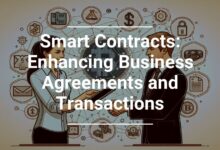Best ERP Software: Streamlining Operations For Business Success
Best ERP software is crucial for businesses looking to streamline their operations and improve efficiency. From defining ERP software to discussing key features and types, this topic delves into the world of enterprise resource planning.
Introduction to ERP Software
ERP software, or Enterprise Resource Planning software, is a centralized system that helps businesses manage and integrate their important processes and data across various departments. The primary purpose of ERP software is to streamline operations, improve efficiency, and provide real-time insights for better decision-making.
ERP software helps businesses streamline their operations by automating repetitive tasks, providing a unified view of data, and optimizing workflows. This allows companies to reduce manual errors, improve collaboration among departments, and enhance overall productivity.
Examples of Industries Using ERP Software
- Manufacturing: ERP software helps manufacturers manage production schedules, inventory levels, and supply chain processes efficiently.
- Retail: Retail companies use ERP software to manage sales, inventory, and customer data to optimize their operations and deliver better customer experiences.
- Finance: Financial institutions leverage ERP software to streamline accounting, financial reporting, and compliance processes for better financial management.
- Healthcare: Healthcare providers utilize ERP software to manage patient records, billing, and scheduling to improve patient care and operational efficiency.
- Education: Educational institutions use ERP software to manage student information, course schedules, and administrative tasks to enhance academic operations.
Key Features to Look for in ERP Software
When selecting ERP software for your business, it is crucial to consider key features that can streamline operations and improve efficiency across different departments. These features serve as the backbone of your ERP system and can greatly impact productivity and decision-making processes.
Integration Capabilities
ERP software should have seamless integration capabilities with other systems and applications used within the organization. This feature ensures that data flows smoothly between departments, eliminating silos and promoting collaboration. For example, integrating ERP with CRM software can provide sales teams with real-time customer information, improving customer service and sales performance.
Customization Options
The ability to customize ERP software to meet the specific needs of your business is essential. Customization options allow you to tailor the system to your unique processes and workflows, ensuring maximum efficiency. For instance, customizing reporting tools can help finance departments generate accurate financial reports quickly, enabling better decision-making.
Scalability
Scalability is another crucial feature to look for in ERP software, especially for growing businesses. A scalable system can adapt to the changing needs of your organization, whether it’s adding new users, expanding to new locations, or integrating new functionalities. This flexibility ensures that your ERP system can grow with your business without requiring a complete overhaul.
Data Security
Data security is paramount in today’s digital landscape, making it a critical feature in ERP software. Robust security measures, such as encryption, access controls, and regular backups, help safeguard sensitive business data from cyber threats. By ensuring data security within the ERP system, businesses can protect their information and maintain compliance with industry regulations.
Types of ERP Software
ERP software comes in various types to cater to different needs and preferences of businesses. Let’s explore the different types available in the market.
Cloud-based ERP Software vs. On-premise Solutions
Cloud-based ERP software and on-premise solutions are two primary types of ERP systems that businesses can choose from. Here is a comparison between the two:
- Cloud-based ERP Software: This type of ERP software is hosted on the vendor’s servers and accessed through a web browser. It offers benefits such as lower upfront costs, easier scalability, and accessibility from anywhere with an internet connection. However, it may raise concerns about data security and customization limitations.
- On-premise Solutions: On-premise ERP software is installed and maintained on the company’s own servers and computers. It provides more control over data security and customization options but typically requires higher upfront costs and IT resources for maintenance and upgrades.
Scalability and Flexibility of ERP Software
When considering ERP software options, scalability and flexibility are crucial factors to consider. Here is a breakdown of how different ERP software options fare in terms of scalability and flexibility:
- Modular ERP Systems: These systems offer scalability by allowing businesses to add or remove modules based on their changing needs. This flexibility enables companies to customize their ERP solution to fit their specific requirements.
- All-in-One ERP Solutions: On the other hand, all-in-one ERP solutions come with a pre-packaged set of modules that may limit scalability and customization options. While these systems are easier to implement, they may not offer the same level of flexibility as modular solutions.
Implementation Process of ERP Software
Implementing ERP software within a company involves several crucial steps to ensure successful deployment.
Steps in Implementing ERP Software
- Planning: Define goals, timeline, and budget for the implementation process.
- Selection: Choose the right ERP software that aligns with the company’s requirements.
- Customization: Tailor the ERP system to meet specific business needs.
- Data Migration: Transfer existing data to the new ERP system accurately.
- Training: Provide comprehensive training to employees to ensure smooth adoption of the software.
- Testing: Conduct thorough testing to identify and resolve any issues before full deployment.
- Go-Live: Roll out the ERP software to all users and monitor its performance.
- Support and Maintenance: Provide ongoing support and maintenance to optimize the software’s functionality.
Common Challenges and Solutions
- Resistance to Change: Address resistance through effective communication and training programs.
- Data Integration Issues: Ensure seamless integration with existing systems through proper planning and testing.
- Budget Overruns: Monitor expenses closely and adjust the budget as needed to avoid overruns.
- Lack of Executive Support: Secure buy-in from top management to drive successful implementation.
Best Practices for Successful ERP Deployment
- Engage Stakeholders: Involve key stakeholders throughout the implementation process to ensure their needs are met.
- Set Clear Goals: Define clear objectives and KPIs to measure the success of the ERP deployment.
- Continuous Training: Provide ongoing training to employees to maximize the software’s potential.
- Regular Evaluation: Continuously assess the ERP system’s performance and make necessary adjustments.
Cost Considerations for ERP Software
When considering ERP software for your business, it’s essential to understand the various costs involved in the process. These costs typically include licensing, implementation, and ongoing maintenance expenses. Calculating the return on investment (ROI) of implementing ERP software is crucial to determine the financial benefits it can provide. Additionally, optimizing costs while selecting the best ERP software is essential to ensure that the investment aligns with the business’s budget and goals.
Breakdown of Costs Associated with ERP Software
- Licensing: ERP software often requires a licensing fee, which can vary based on the number of users and modules needed.
- Implementation: The implementation process involves costs related to customization, training, data migration, and integration with existing systems.
- Maintenance: Ongoing maintenance costs include software updates, technical support, and system upgrades to ensure the ERP software operates effectively.
Calculating Return on Investment (ROI) of Implementing ERP Software
- ROI = (Net Profit from ERP Implementation – Total Costs of ERP Implementation) / Total Costs of ERP Implementation * 100%
- Factors to consider when calculating ROI include increased productivity, reduced operational costs, improved decision-making, and potential revenue growth.
Optimizing Costs While Selecting the Best ERP Software
- Conduct a thorough cost-benefit analysis to evaluate different ERP software options based on features, scalability, and pricing.
- Consider cloud-based ERP solutions that offer subscription-based pricing to reduce upfront costs and provide flexibility for scaling.
- Explore open-source ERP software options that can lower licensing fees but may require additional customization and support costs.
Concluding Remarks
In conclusion, selecting the best ERP software can significantly impact a company’s success by enhancing productivity and optimizing costs. With the right system in place, businesses can achieve operational excellence and stay ahead of the competition.


